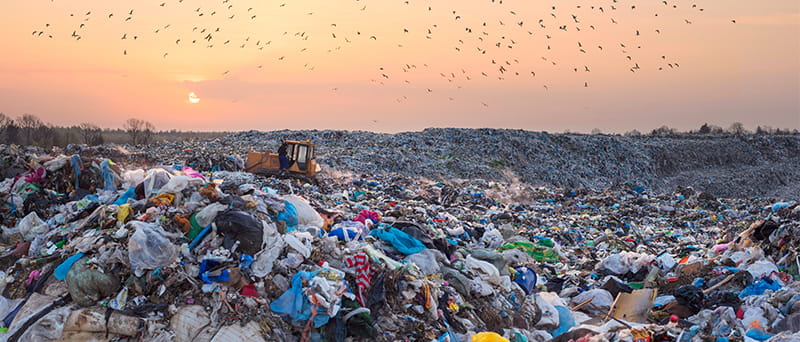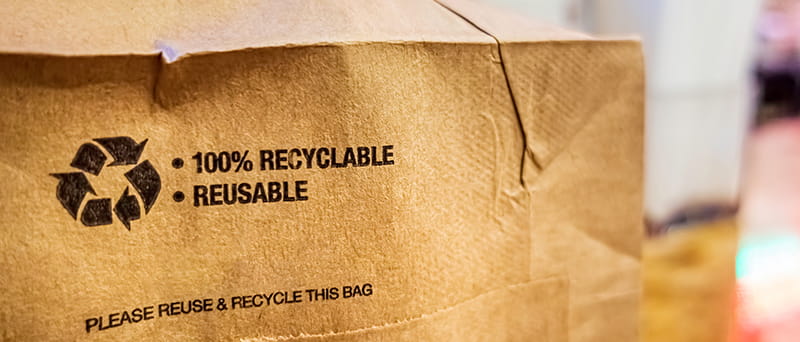Read the latest thoughts and analysis on breakthrough solutions driving impact for a sustainable future
Abu Dhabi’s Plastic Ban Is Working. The World Should Pay Attention.

A little over a hundred years ago, plastic was hailed as a miracle, and it is still vital to our modern world – essential in countless applications, from medical devices and food preservation to transportation, electronics, and clean energy technologies like wind turbines and solar panels. But because of how we dispose of it, plastic has also become an environmental menace.
Ironically, the material was first invented in an effort to solve an emerging environmental crisis. In the 1800s, elephants were being hunted to the brink of extinction for their ivory, used in products like billiard balls and piano keys. In response to dwindling numbers, a competition was launched to find a synthetic alternative to ivory. A young inventor rose to the challenge, creating celluloid, one of the first man-made plastics. But its widespread disposal has since created a new environmental threat, polluting ecosystems, harming wildlife, and releasing toxic chemicals and greenhouse gases.
Plastics development and adoption soared during the 20th and 21st centuries, until it became the ubiquitous material we know it as today: wrapping our food, making our tools and appliances, and revolutionizing manufacturing. But rapidly, plastics have become the poster child for having too much of a good thing.
Plastic, plastic everywhere
The UN estimates the world produces 430 million tonnes of plastic per year. In a mind-boggling statistic, every day the equivalent of 2,000 garbage trucks worth of plastic is emptied into our rivers, lakes, and oceans, and more is dumped into landfills, leaching into soil and water and harming wildlife.

Plastics are now everywhere we want them, and everywhere we don’t. A plastic bag has been found in the depths of the Marianas Trench, microplastics near the summit of Mount Everest, as well as in household dust, in sea ice, in soil, in drinking water, in the human bloodstream, and more.
It doesn’t take a degree in environmental science to grasp the problem: most plastic is used once and discarded improperly, leading to pollution, overflowing landfills, and ecosystem damage.
But plastic use is now so interwoven in our lives, our products, and our habits that the solutions will need to be sophisticated, collaborative, and varied, tackling plastic pollution from all fronts: finding alternative materials, reducing use and – most difficult of all – changing behavior.
Individually, each is a tricky task, but through systems thinking and collaboration, governments and environmental actors can jump all three hurdles in one leap.
A global shift with local breakthroughs
Plastic bans have emerged as a powerful policy tool in countries around the world, with dozens of governments moving to restrict or eliminate the most harmful single-use plastics. Rwanda, for example, was one of the earliest to introduce a nationwide ban on plastic bags in 2008, setting a precedent for other African nations. In Chile, retailers have been prohibited from distributing plastic bags since 2019. India implemented a ban on several categories of single-use plastics in 2022, while the European Union has restricted plastic cutlery, plates, and straws under its Single-Use Plastics Directive. These bans vary in scope and enforcement, but all reflect a growing consensus: reducing plastic waste is no longer optional.
Abu Dhabi’s approach stands out not only as part of this growing movement, but as a model of effective implementation. In 2022, Abu Dhabi became the first in the region to implement a ban on single-use plastic bags. Led by the Environment Agency – Abu Dhabi, the policy prohibited retailers from distributing single-use plastic bags and required vendors to offer reusable alternatives.
But policy is one thing; practice is another. To give the policy real weight, authorities bolstered it with coordination with vendors and private companies, rallying public support from major retailers and investing in an extensive public awareness campaign to get buy-in from consumers.
The impact was almost immediate. Retailers adapted. The public complied, reusable bags in hand. Within a year, the use of plastic bags plummeted by 95%. The carbon footprint of the quantity of plastic eliminated was equivalent to 272,000 tonnes of CO2 equivalent.

The Environment Agency has since built on its success, with a subsequent successful launch of a plastic bottle return scheme, and in 2024, an expansion of the single use plastic ban to include styrofoam cups, lids, plates, and beverage containers.
Abu Dhabi’s efforts offer invaluable lessons in policy design: policies are a good start, but only a start. They must be fueled by collaboration with the private sector, investment in public education, and most of all, a steadfast commitment to changing environmentally destructive practices, regardless of how ingrained they may be.
Bold innovation and action are needed now
Across the supply chain, we’re finding ways to go plastic free. Innovators are creating plastic alternatives with biodegradable materials made from seaweed, cassava, and agricultural waste. In parallel, scientists are exploring enzymes that can break down plastic in days rather than centuries.
Yet progress remains uneven, and global successes shouldn’t breed complacency. Global plastic waste is projected to almost triple by 2060 without major national interventions. What case studies like Abu Dhabi illustrate is that interventions on this scale are not only possible, but proven.
Plastic’s unchecked rise was unintended, but it brought undeniable benefits to modern life – as well as a monumental global challenge caused by how we dispose of our plastic waste. Addressing the damage will require companies and consumers to act with greater intention and urgency, this time prioritizing reduction, reuse, and responsible disposal.
Ironically, the material was first invented in an effort to solve an emerging environmental crisis. In the 1800s, elephants were being hunted to the brink of extinction for their ivory, used in products like billiard balls and piano keys. In response to dwindling numbers, a competition was launched to find a synthetic alternative to ivory. A young inventor rose to the challenge, creating celluloid, one of the first man-made plastics. But its widespread disposal has since created a new environmental threat, polluting ecosystems, harming wildlife, and releasing toxic chemicals and greenhouse gases.
Plastics development and adoption soared during the 20th and 21st centuries, until it became the ubiquitous material we know it as today: wrapping our food, making our tools and appliances, and revolutionizing manufacturing. But rapidly, plastics have become the poster child for having too much of a good thing.
Plastic, plastic everywhere
The UN estimates the world produces 430 million tonnes of plastic per year. In a mind-boggling statistic, every day the equivalent of 2,000 garbage trucks worth of plastic is emptied into our rivers, lakes, and oceans, and more is dumped into landfills, leaching into soil and water and harming wildlife.

Plastics are now everywhere we want them, and everywhere we don’t. A plastic bag has been found in the depths of the Marianas Trench, microplastics near the summit of Mount Everest, as well as in household dust, in sea ice, in soil, in drinking water, in the human bloodstream, and more.
It doesn’t take a degree in environmental science to grasp the problem: most plastic is used once and discarded improperly, leading to pollution, overflowing landfills, and ecosystem damage.
But plastic use is now so interwoven in our lives, our products, and our habits that the solutions will need to be sophisticated, collaborative, and varied, tackling plastic pollution from all fronts: finding alternative materials, reducing use and – most difficult of all – changing behavior.
Individually, each is a tricky task, but through systems thinking and collaboration, governments and environmental actors can jump all three hurdles in one leap.
A global shift with local breakthroughs
Plastic bans have emerged as a powerful policy tool in countries around the world, with dozens of governments moving to restrict or eliminate the most harmful single-use plastics. Rwanda, for example, was one of the earliest to introduce a nationwide ban on plastic bags in 2008, setting a precedent for other African nations. In Chile, retailers have been prohibited from distributing plastic bags since 2019. India implemented a ban on several categories of single-use plastics in 2022, while the European Union has restricted plastic cutlery, plates, and straws under its Single-Use Plastics Directive. These bans vary in scope and enforcement, but all reflect a growing consensus: reducing plastic waste is no longer optional.
Abu Dhabi’s approach stands out not only as part of this growing movement, but as a model of effective implementation. In 2022, Abu Dhabi became the first in the region to implement a ban on single-use plastic bags. Led by the Environment Agency – Abu Dhabi, the policy prohibited retailers from distributing single-use plastic bags and required vendors to offer reusable alternatives.
But policy is one thing; practice is another. To give the policy real weight, authorities bolstered it with coordination with vendors and private companies, rallying public support from major retailers and investing in an extensive public awareness campaign to get buy-in from consumers.
The impact was almost immediate. Retailers adapted. The public complied, reusable bags in hand. Within a year, the use of plastic bags plummeted by 95%. The carbon footprint of the quantity of plastic eliminated was equivalent to 272,000 tonnes of CO2 equivalent.

The Environment Agency has since built on its success, with a subsequent successful launch of a plastic bottle return scheme, and in 2024, an expansion of the single use plastic ban to include styrofoam cups, lids, plates, and beverage containers.
Abu Dhabi’s efforts offer invaluable lessons in policy design: policies are a good start, but only a start. They must be fueled by collaboration with the private sector, investment in public education, and most of all, a steadfast commitment to changing environmentally destructive practices, regardless of how ingrained they may be.
Bold innovation and action are needed now
Across the supply chain, we’re finding ways to go plastic free. Innovators are creating plastic alternatives with biodegradable materials made from seaweed, cassava, and agricultural waste. In parallel, scientists are exploring enzymes that can break down plastic in days rather than centuries.
Yet progress remains uneven, and global successes shouldn’t breed complacency. Global plastic waste is projected to almost triple by 2060 without major national interventions. What case studies like Abu Dhabi illustrate is that interventions on this scale are not only possible, but proven.
Plastic’s unchecked rise was unintended, but it brought undeniable benefits to modern life – as well as a monumental global challenge caused by how we dispose of our plastic waste. Addressing the damage will require companies and consumers to act with greater intention and urgency, this time prioritizing reduction, reuse, and responsible disposal.
More Articles
27 NOVEMBER 2025
Energy Transformation
From pledge to policy: how the UAE is turning climate ambition into action
26 NOVEMBER 2025
Decarbonization


